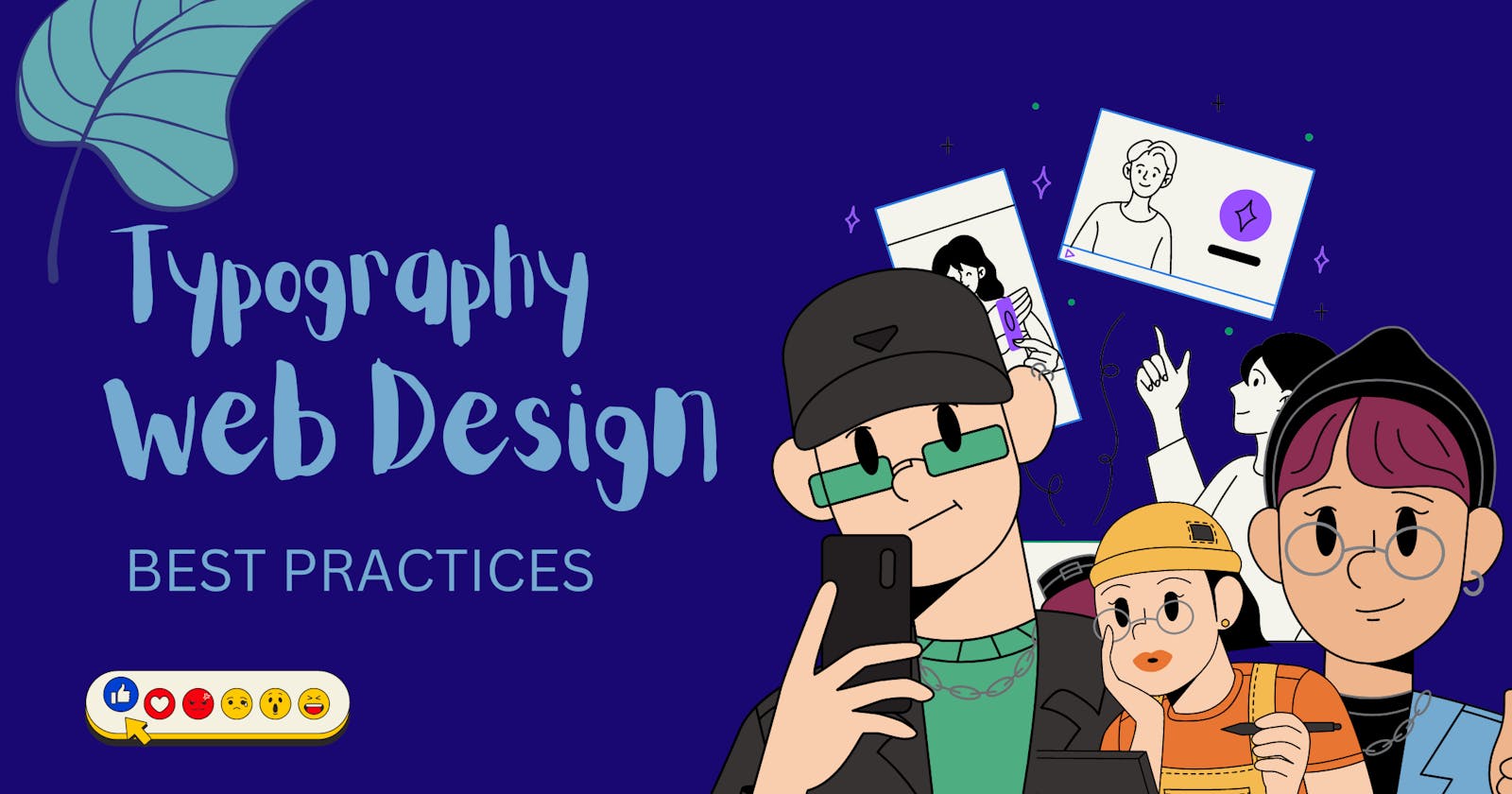In web design, typography plays a crucial role in creating an effective website. Good typography ensures that your website's content is easily readable and accessible to your target audience. This article will discuss the best practices for typography in web design that will improve the legibility and readability of your website's content.
The Importance of Typography in Web Design
Typography refers to the art and technique of arranging type to make written language legible, readable, and appealing when displayed. Typography plays a vital role in web design because it helps to convey the message of the website, guide the reader's eye, and establish the website's brand identity.
If typography is not given the attention it deserves, it can negatively affect the user experience of a website. Poor typography can make it difficult for users to read the content, leading to frustration and ultimately driving them away from the website. Therefore, it is essential to pay attention to typography in web design.
Best Practices for Typography in Web Design
Choose the Right Font
Choosing the right font is the first step in creating effective typography in web design. You must choose a font that is easily readable and conveys the message of the website. Serif fonts are ideal for print design, but for web design, sans-serif fonts are preferred as they are easier to read on screens.
Moreover, you must ensure that the font size is appropriate for the target audience. A font size of 16px is recommended for body text. It is also essential to consider the contrast between the font and the background. The contrast should be high enough to ensure that the text is legible.Use Hierarchy
Hierarchy is crucial in typography as it helps the reader navigate through the content. In web design, you must use typography to establish a visual hierarchy on the page. This can be done by varying the font size, weight, and color to indicate the importance of the content.
For example, the title of the page should be the most prominent element on the page, followed by subheadings and body text. The use of hierarchy ensures that the reader can quickly scan through the content and find the information they are looking for.Use White Space
White space refers to the empty space around elements on the page. It is an essential aspect of typography as it allows the reader to focus on the content. White space can be used to separate content and create a visual hierarchy.
Moreover, white space helps to improve the readability of the text. If the text is too cramped, it can be challenging to read, leading to eye strain and fatigue. Therefore, it is essential to use white space effectively in web design.Keep it Simple
In typography, simplicity is key. Using too many fonts, font sizes, or font colors can make the design cluttered and confusing. Therefore, it is recommended to use no more than three fonts in a design. Similarly, the use of too many font weights can also make the design look cluttered.
Moreover, it is essential to use a consistent typeface throughout the website. This helps to establish the brand identity of the website and create a cohesive design.Use Contrast
Contrast is essential in typography as it helps to establish a visual hierarchy and make the content more readable. You can create contrast by varying the font size, weight, and color. The contrast between the font and the background is also crucial in making the content more readable.
It is essential to use contrast carefully and avoid using too many colors or fonts, which can make the design look cluttered.Consider Accessibility
Good typography not only improves legibility and readability but also accessibility. It's important to consider users with visual impairments and ensure that the website's typography is easily readable for them as well. This includes using a font that is accessible to those with dyslexia or other reading disabilities, as well as making sure that the font size is large enough to be easily read.
In addition, it's important to ensure that there is enough contrast between the text and background. This not only helps those with visual impairments but also ensures that the text is easily readable on all devices and in various lighting conditions.Test and Iterate
Once the typography is implemented on the website, it's important to test it thoroughly and iterate as needed. This includes checking for any readability issues, making sure the font renders correctly on all devices and browsers, and ensuring that the font size and line height are appropriate for all users.Testing can also involve getting feedback from users and making changes based on their input. This helps ensure that the website's typography is not only visually appealing but also functional and user-friendly.
Conclusion
typography is an essential component of web design, impacting the legibility and readability of the content presented on a website. A successful website must have a clear and consistent typographic hierarchy that guides the reader's eye and makes the content easy to read and digest. By following best practices such as choosing appropriate fonts, using appropriate font sizes, and optimizing line length and spacing, web designers can improve the overall user experience of their websites.
However, it's important to remember that typography is just one piece of the puzzle in creating an effective website. A successful website should also have a well-designed layout, clear navigation, and high-quality content. By taking a holistic approach to web design and prioritizing the needs of the user, web designers can create websites that are both visually appealing and highly functional.
In today's digital age, a strong online presence is more important than ever before, and typography plays a crucial role in creating a website that stands out from the crowd. By understanding the principles of typography and implementing best practices, web designers can create websites that are both aesthetically pleasing and easy to use, ensuring that their message is conveyed clearly and effectively to their audience.
So the next time you design a website, pay close attention to the typography. Make sure that the fonts you choose are appropriate for the message you are trying to convey and that they are easy to read on any device. Use size, spacing, and color to create a clear hierarchy that guides the reader's eye and helps them navigate through the content. By doing so, you'll be well on your way to creating a website that is not only beautiful but also effective in communicating your message to your audience.
If you have any questions or would like to learn more about web design, feel free to follow me on Twitter (@_PulkitSingh) for more tips and insights.

